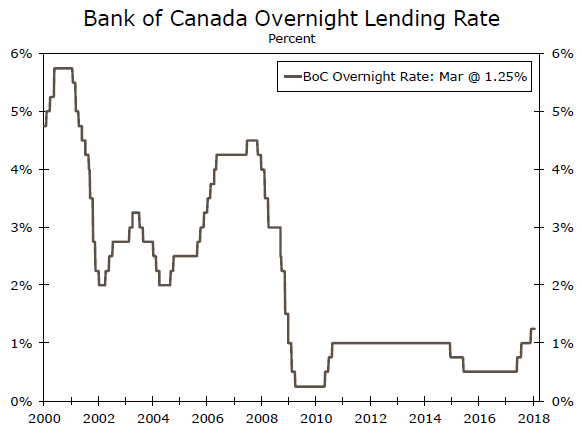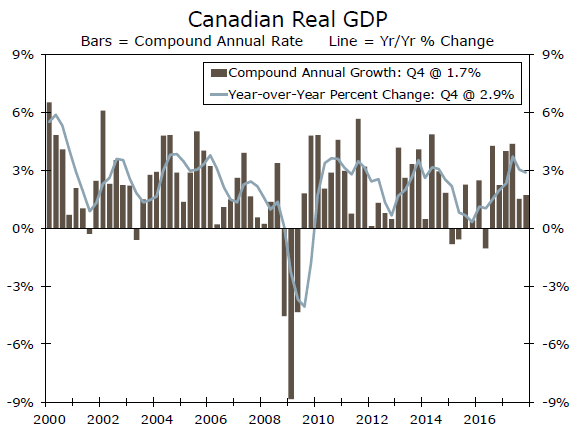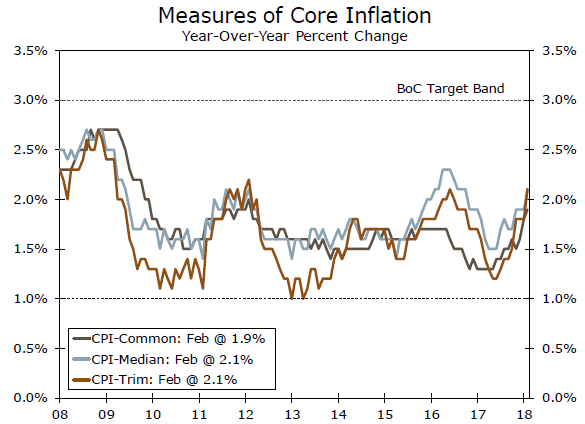The Bank of Canada (BoC) kept its benchmark rate at 1.25 percent in April, and is taking a more cautious approach to adjusting rates in the face of softer economic data and geopolitical uncertainty.
Overnight Lending Rate Steady at 1.25 Percent
The BoC maintained its overnight target lending rate at 1.25 percent at its April policy announcement, in line with consensus expectations. The BoC has increased benchmark rates three times since July 2017, most recently in January, but is taking a more restrained approach to further rate hikes.
Economic data came in somewhat softer to start 2017, giving space to hold off on further rate increases. Employment growth surprised to the downside in February, posting a flat-out decline, though a pickup in full-time jobs in March helped employment recover for Q1. GDP growth also came in weaker than expected, posting a 0.1 percent decline in January that reflected housing market and export weakness.
The BoC concluded its policy statement, which accompanies the rate announcement, with what we interpret as a dovish tone. It highlighted “some” progress on key issues of inflation and wage growth, which should warrant higher interest rates “over time.” However, the Bank also emphasized a “cautious” near-term approach, informed by monitoring the economy’s sensitivity to interest rates and economic capacity.
How Close to Full Capacity?
Canada’s economy grew a breakneck 3.0 percent in 2017 as a whole, lifted by strong contributions from consumer spending and business investment. Even with some slowing in 2018 so far, the fast pace of growth has eaten up resource slack; industrial capacity utilization rates edged up in every quarter of 2017 and the Canadian unemployment rate, at 5.8 percent in March, is the lowest in 40 years. These measures paint a picture of a Canadian economy operating near full capacity, and would point to rising inflation pressures.
While the BoC acknowledges that “the economy is projected to operate slightly above its potential over the next the years,” Governor Stephen Poloz has emphasized that untapped potential remains. In a March speech to students at Queen’s University, Poloz highlighted that there remains room to draw more youth and women into the labor force, which would ease labor supply constraints. Additionally, increased business investment brought by stronger economic growth is likely to help build out capacity in the economy.
Core measures of consumer price inflation in Canada have edged up, and are currently right around the BoC’s symmetric 2 percent target. Along with resource constraints, higher gasoline prices and minimum wage increases this year in Ontario and Alberta are likely to be supportive of inflation over the near term. However, an inflation overshoot is not a large enough concern at this point to force the BoC’s hand in doling out faster rate increases. More significant right now than inflation are risks to the economic outlook posed by slower growth, elevated household debt and uncertainty over NAFTA. Given these considerations, we maintain our call for one more hike in 2018.
















